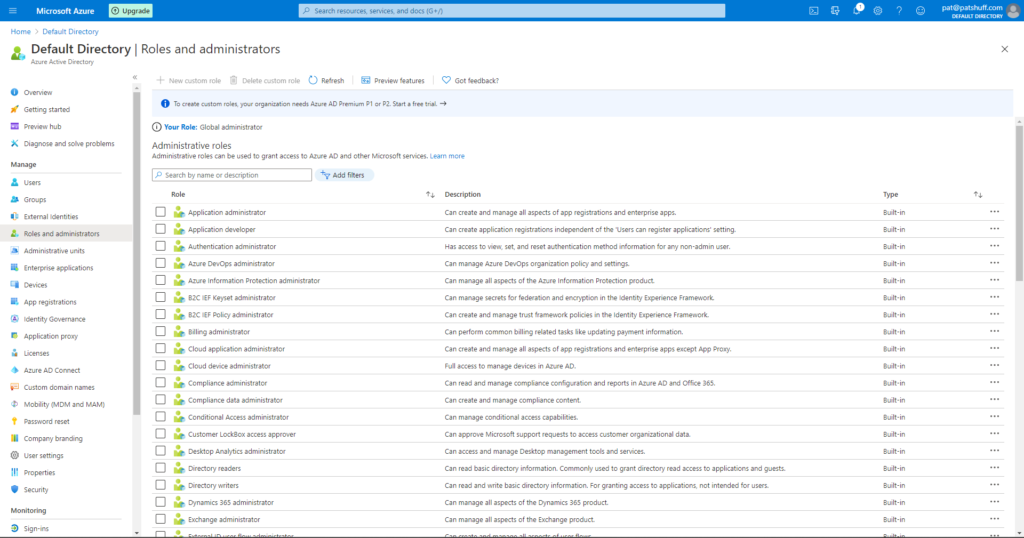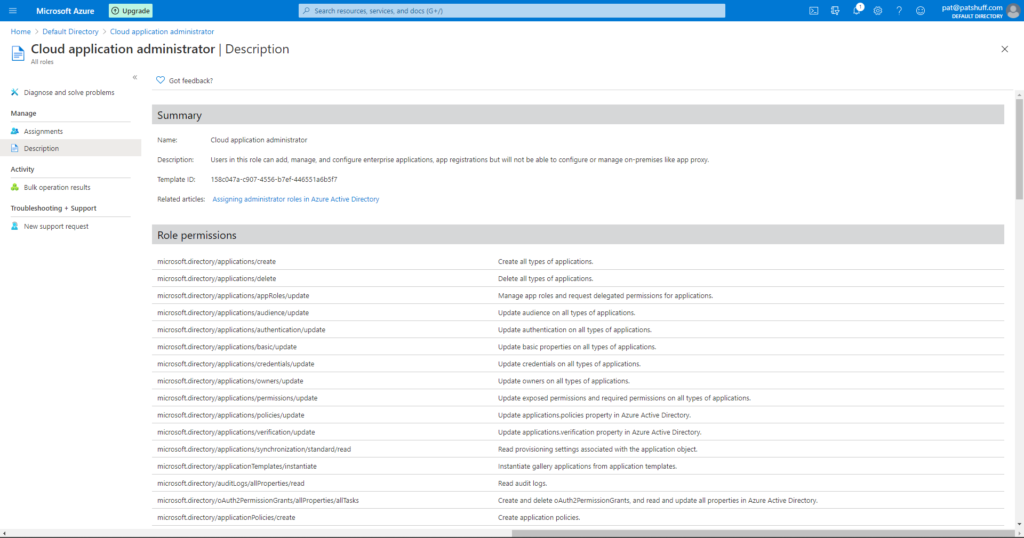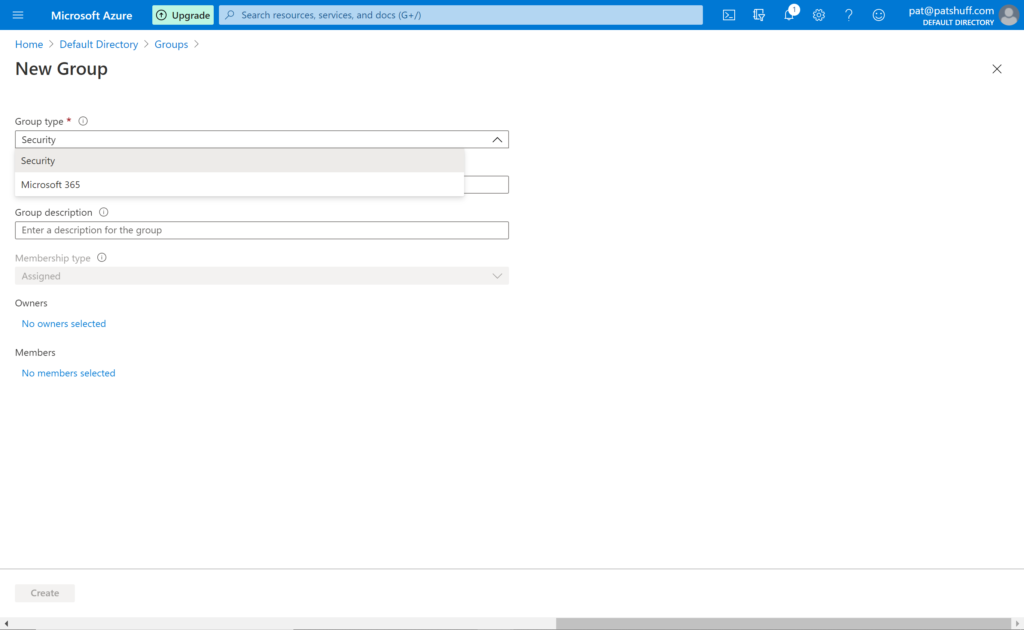In a previous blog we talked about Azure AD and Tenant, Subscription, and User administration as well as Azure AD Group management and Terraform and how to map these functions to Terraform. In this blog we will continue this discussion but move onto Roles and RBAC in Azure.
Roles and administrators in Azure Active Directory help define actions that can be performed by users, groups, and services. Some roles, for example, are account specific allowing users or members of groups to create other users and groups or manage billing. Other roles allow not only users and groups to manage virtual machines but also allows services and other virtual machines to manage virtual machines. Backup software, for example, needs to be able to update or create virtual machines. The backup software can be associated with a service and that service needs to have permission to be able to read, update, and create new virtual machines.

If we select one of the pre-defined roles we can look at the Role permissions. Selecting the Cloud application administrator shows a list of Role permissions associated with this Role definition.

Looking at the Microsoft documentation on Azure Roles, there are four general build-in roles
- contributor – full access to resource but can not pass role to other users, groups, or services
- owner – full access to resources
- reader – view only role but can not make changes to anything
- user access administrator – can change user access to resource but can’t do anything with the resource like read, update, delete, or create.
Associated with these base roles are pre-defined roles to allow you to perform specific functions. These roles have actions associated with the role and the actions can either allow or prohibit an action. An example of this would be the pre-defined role of “Reader and Data Access”. This role allows for three actions, Microsoft.Storage/storageAccounts/listKeys/action, Microsoft.Storage/storageAccounts/ListAccountSas/action, and Microsoft.Storage/storageAccounts/read. Note none of these permissions allow for create, delete, or write access. This user can read and only read data associated with a Storage Account.
If we look at role related functions in the azuread provider in Terraform, the only role related call is the azureread_application_app_role resource declaration. This resource declaration applies to application_objects and not users. This is not the roles that we are talking about in the previous section.
If we look at the role related functions in the azurerm provider in Terraform, we get the ability to define a role with the azurerm_role_definition data source as well as the azurerm_role_definition and azurerm_role_assignement resource definition. The role assignment allows us to assign roles to a user or a group. The role definition allows us to create custom roles which allows us to associate a role name to actions and disabled actions through a permission block. The scope of the role definition can be associated with a subscription, a resource group, or a specific resource like a virtual machine. The permissions block allows for the definition of actions, data actions, not_actions, and not_data_actions. A permission must include a wildcard [*] or a specific Azure RM resource provider operation as defined by Microsoft. These operations map directly to actions that can be performed in Azure and are very unique to Azure and Microsoft operations in Azure. This list can also be generated from the Get-AzProviderOperations or az provider operations list commands in PowerShell and the Azure CLI.
All of these operations can be performed with the Get-AzRoleDefinition, New-AzRoleDefinitions, Remove-AzRoleDefinition, Set-AzRoleDefinition, Get-AzRoleAssignment, New-AzRoleAssignment, Set-AzRoleAssignment, and Remove-AzRoleAssignment commands in PowerShell. My recommendation is to use the local-exec command to call these command line functions rather than coding them in Terraform. Scripts can be generated to create, update, and delete roles as needed to run outside of Terraform or as a local-exec call. Given that roles typically don’t get updated more than once or twice during a project automating the creation and destruction of a role can cause unnecessary API calls and potential issues if projects overlap with role definitions. One of the drawbacks to Terraform is that it does not have the cross project ability to recognize that a resource like a role definition is used across multiple workspaces or projects. Terraform treats the resource declaration as something absolute to this project and creates and destroys resources on subsequent runs. The destruction of a role can adversely effect other projects thus the creation and destruction should be done either at a higher level and reference it with a data declaration rather a resource declaration or provisioned through scripts run outside of Terraform.
In summary, roles are an important part of keeping Azure safe and secure. Limiting what a user or a service can do is critical in keeping unwanted actions or services from corrupting or disabling needed services. Role definitions typically span projects and Terraform configurations and are more of an environment rather than a resource that needs regularly refreshed. Doing role creation and assignments in Terraform can be done but should be done with care because it modifies the underlying environment that crosses resource group boundaries and could potentially negatively impact other projects from other groups.
